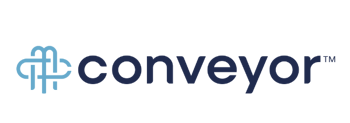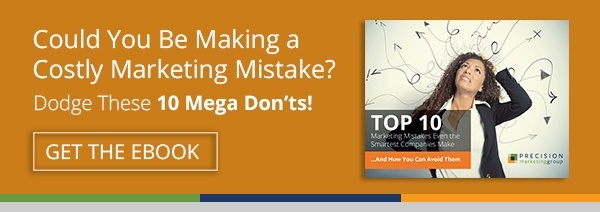Whenever you’re in the midst of brainstorming gift ideas for family members or friends, your natural instinct is to think about what that person really wants or needs, right? Contextual marketing, or customizing your marketing content for your target buyer personas, involves the same principles. And the impact of personalization can be profound.
In fact, implementing contextual marketing techniques can actually lead to a 20% or more increase in sales. Even when sending company newsletters geared towards specific personas, businesses see a 50% increase in the open rate and an 80% increase in clicks. This is why making a concerted effort to personalize content based on who is consuming it, what they want, and what they need to do is so important.
In the B2B world, a given sales funnel is typically longer, and it may incorporate a thorough research process. It makes such a difference to the prospect when this buying experience is simplified, smooth, and user-friendly. Check out these 8 ways you can cater to your website visitors and add a much more personal touch to your B2B marketing strategy.
1. Send emails from a person, not a company.
One easy way to improve your B2B marketing communications is to send emails from your own address, or from someone in your company to whom the recipient has already been exposed. Do not send an email from something like info@company or sales@company. Receiving messages from an actual person “humanizes” the business, an issue with which B2B companies often struggle – and it also lets readers know who is responsible for answering any questions they might have.
2. Use first names in emails.
Instead of writing “dear friend” or “to our valued customer,” include the contact’s first name in the greeting. A first name is surely one of the easier pieces of information to obtain about a lead. What’s more, most email service providers allow you to customize messages with a recipient’s first name, so there really isn’t any excuse not to use it. And to be frank, if you don’t know a contact’s first name, you probably shouldn’t be sending them messages anyway.
3. Apply smart CTAs.
Busy B2B buyers should be able to find the information they need right when they need it. When a converted lead returns to your website, replace a previously seen Call-to-Action with another offer that will help the prospect move along your funnel. This could be a CTA button linking to a related piece of content, a relevant case study, or an assessment of some kind.
4. Customize landing page forms.
If an interested lead “reconverts” by submitting a second form on a different landing page, your website should recognize the visitor (unless they have cleared their cookies) and ask them for different information. Or, at the very least, the form shouldn’t ask them for the same information once again. This technique for compiling data is sometimes referred to as progressive profiling. With that said, when gathering lead intelligence, you should only be asking for what you really need. Requesting too much too soon can turn off a prospect all together. Check out our infographic for additional landing page strategy tips!
5. Create content for your buyer personas.
To build trust in a B2B market, your target prospects need to recognize that you know how to solve problems like the ones they encounter on a regular basis. Write blog posts that specifically address the needs of your different segments, and optimize the articles for the target keywords that define the segment. You can also use these posts as informational aids throughout your lead nurturing campaigns.
6. Funnel prospects into need-specific email campaigns.
When a new lead fills out a form on your website in exchange for a helpful resource, you receive insights into what products or services that contact may be interested in. Now it’s your job to nurture those leads. Based on specific information collected by your landing page forms, you can automatically include these leads in an email campaign, and send them helpful content, tools, etc. Not only will this gauge their interest in your company’s products or services, but it will demonstrate you are ready, willing, and able to help them achieve their business goals.
7. Segment your content by industry.
On your website’s navigation menu, it’s a good idea to include a “Who We Work With” or “Industries Served” tab. When prospects check out your site, they should easily be able to find the content that applies to their specific type of business. Implementing a search bar into the company home page also makes this information more accessible.
8. Write a “thank you” note.
Let’s say a prospective customer attended an event you hosted, or a current customer referred you to a partner that resulted in new business – or you simply want to thank your clients for a wonderful year. A hand-written letter goes a long way! Think about how you feel when someone takes the time to write you a personal note. :)
Some of these personalization techniques are easy to apply, while others may take a little more time – or the proper marketing automation software. Please let us know if you have any questions… We’d be happy to provide you with the direction or support you need to bring your B2B marketing strategy up to snuff!




